Substack has emerged as a popular platform for writers and creators to publish newsletters and manage subscriptions.
However, various needs and preferences may lead some to seek alternatives that better align with their specific requirements. Whether for more robust customization options, different monetization methods, or additional features not offered by Substack, exploring other platforms can provide creators with the tools they need to succeed in the competitive landscape of online publishing.
#1 Quail
Quail is a modern, AI-powered platform designed for content creators to publish newsletters and blogs while building and monetizing a membership community. Quail supports integration with popular messaging platforms and offers tools to enhance user engagement.
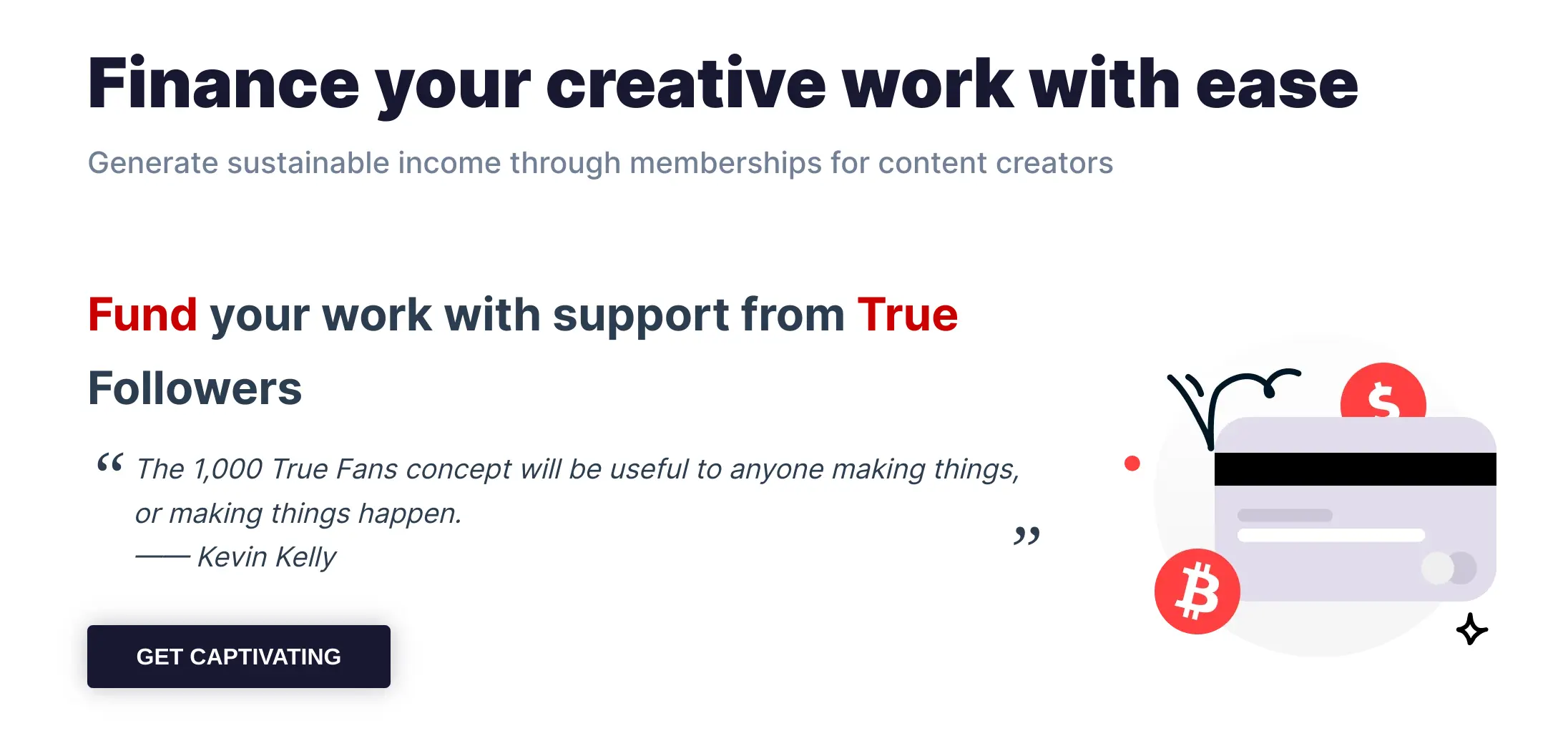
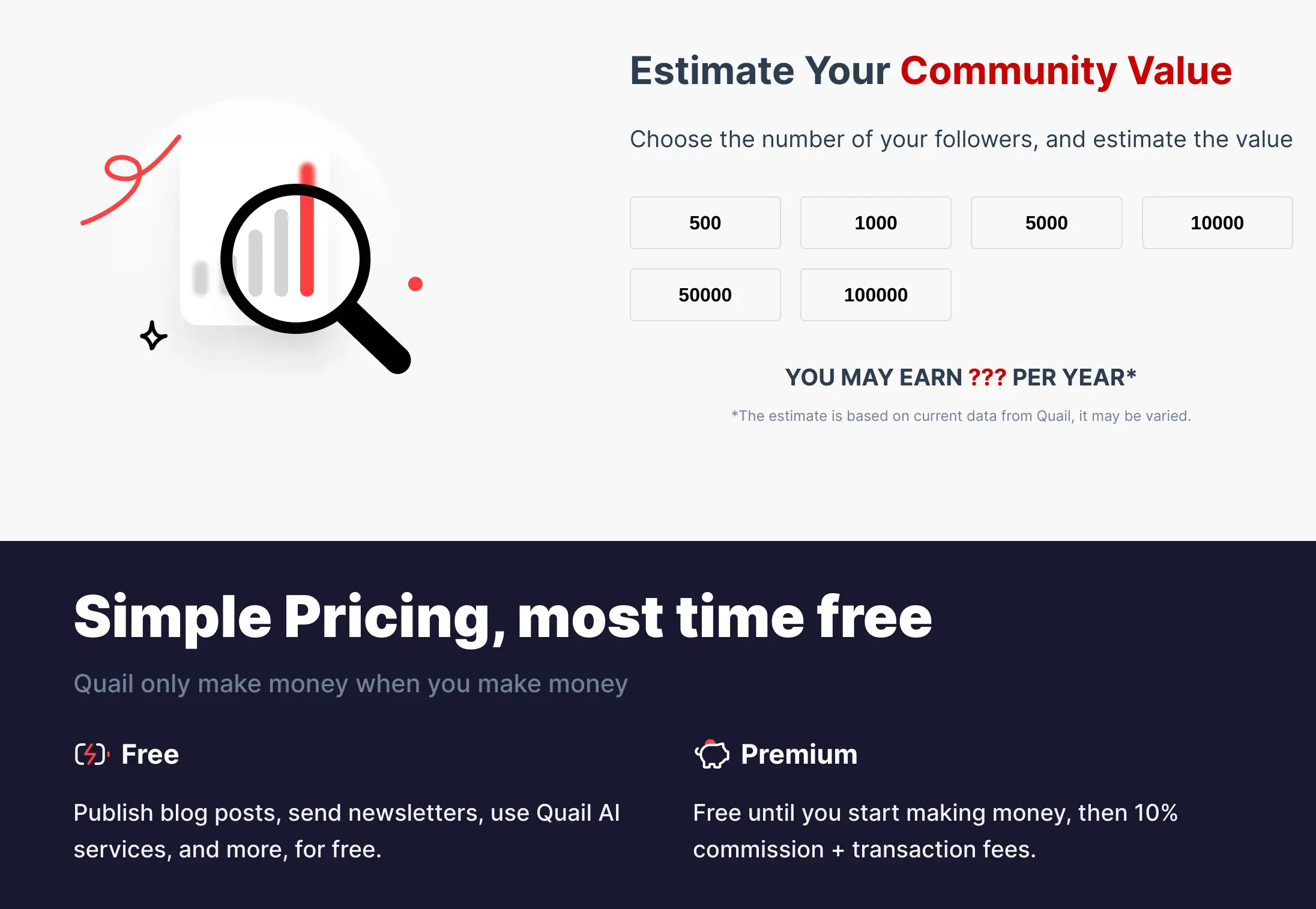
Pros:
- AI Integration: Utilizes advanced AI to optimize content and audience interaction.
- Multiple Integrations: Compatible with Telegram, Discord, LINE, etc., facilitating broad communication options.
- Creator-Friendly Monetization: Only charges fees once you start earning, making it accessible for new creators.
Cons:
- New on the Market: Being relatively new, it might not yet have the proven track record of more established platforms.
No Initial Cost: Free to use until you begin earning revenue, after which it takes a commission on earnings and transaction fees.
Quail's unique approach to monetization and its robust AI features make it an excellent choice for creators who want to grow their audience without upfront costs.
Quail's seamless integration with various communication platforms enhances the ability to reach and interact with subscribers effectively, making Quail a compelling option for anyone looking to transition into or expand their online publishing efforts.
#2 Ghost
Ghost is an open-source publishing platform that focuses on professional publishing. It's designed for bloggers, journalists, and companies seeking to create a seamless content management system with a clean, minimal interface.

Pros:
- Clean, user-friendly interface
- Strong focus on SEO and performance
- No platform fees for payments as it integrates directly with Stripe
- Full ownership of content and subscriber data
Cons:
- Requires technical knowledge for setup and customization
- Less plug-and-play compared to Substack
Pricing: Ghost offers a self-hosted version for free, with paid hosting starting from $9 per month, which includes basic features suitable for individual creators. More advanced features and support options are available at higher price tiers.
#3 Patreon
Patreon is widely recognized for enabling creators to earn revenue directly from their fans via a subscription model. It supports various types of creators including artists, musicians, and writers.
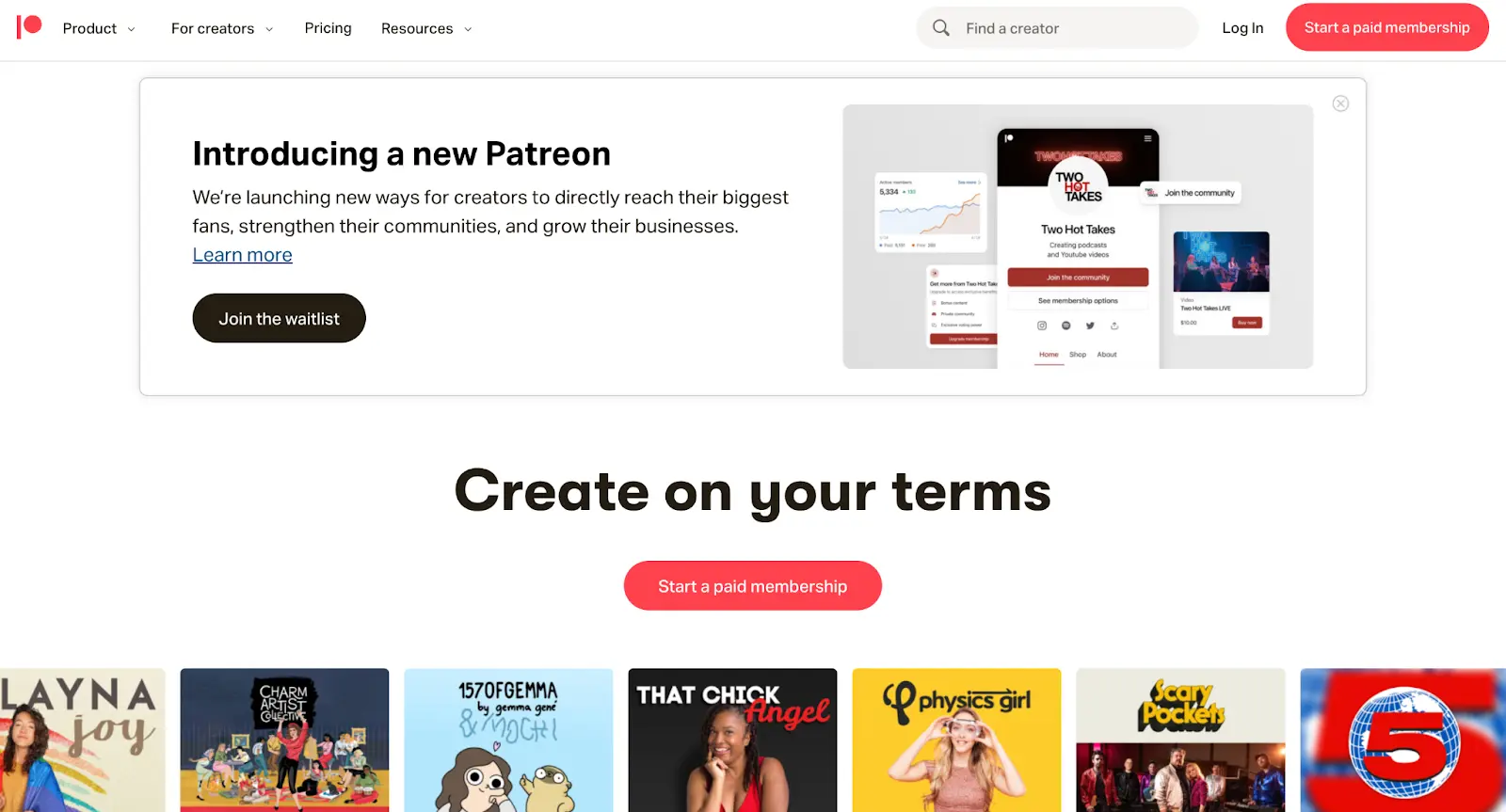
Pros:
- Allows creators to offer exclusive content to subscribers.
- Provides multiple tiers of membership levels.
- Strong community engagement tools.
Cons:
- Higher fees compared to some other platforms.
- Limited newsletter-specific features.
Pricing: Patreon takes a percentage of the earnings, which varies depending on the plan chosen by the creator. There are several tiers offering different levels of service and features, starting from a basic plan with essential tools to more advanced plans that include premium support and lower transaction fees.
#4 Memberful
Memberful is a platform that integrates with websites and social media to help creators sell subscriptions without disrupting their existing workflows.

Pros:
- Seamless integration with websites and social platforms.
- Offers tools for email communications, analytics, and audience management.
- Allows for custom branding and member engagement.
Cons:
- Less focus on standalone publishing; relies on integration with existing websites or platforms.
- May require more technical setup compared to fully hosted solutions.
Pricing:
- Memberful offers a free starter plan, with premium features available under Pro and Premium plans. Pricing for paid plans depends on transaction fees and additional features.
#5 Mailchimp
Mailchimp is a comprehensive marketing platform known for its robust email marketing services. It offers tools that go beyond newsletters, including automation, advertising, and analytics.
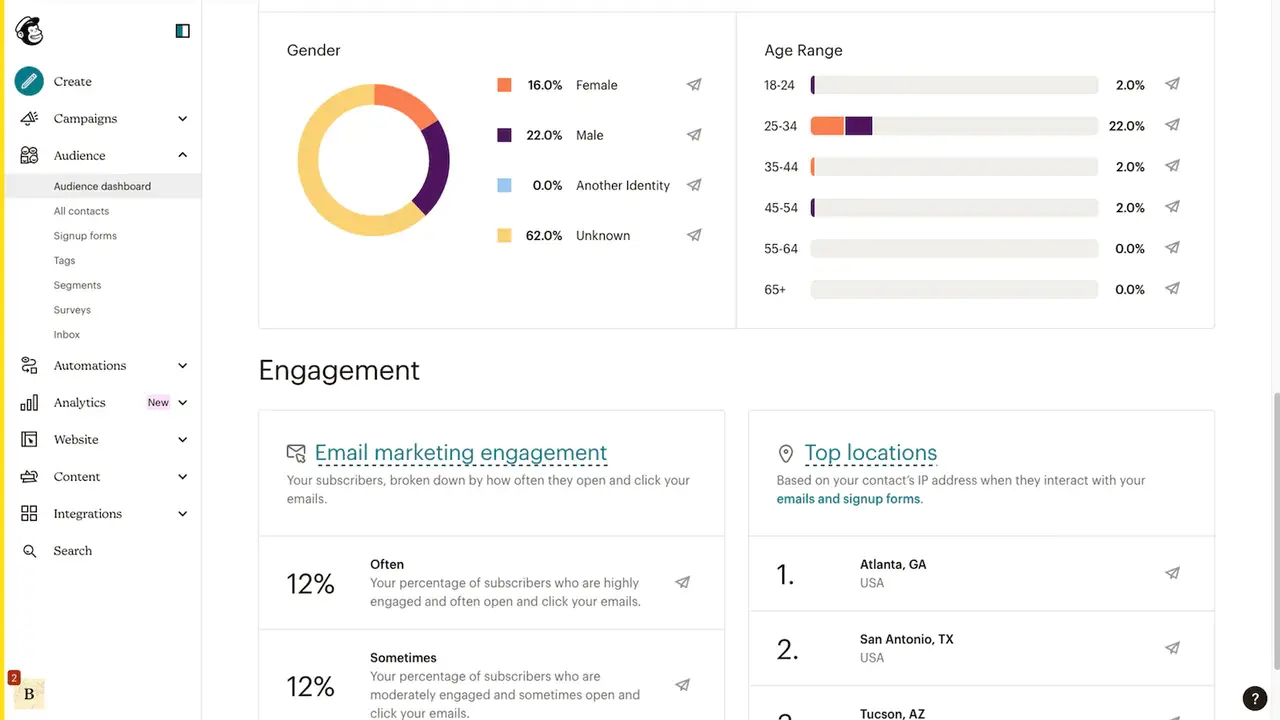
Pros:
- Extensive marketing tools including automation and analytics.
- User-friendly interface with drag-and-drop features.
- Scalable services suitable for both small businesses and large enterprises.
Cons:
- Can be more expensive than some alternatives, particularly at higher scales.
- Some features may be overly complex for users only interested in simple newsletter services.
Pricing: Mailchimp offers a tiered pricing model starting with a free plan for basic features. Paid plans provide more advanced features and are priced based on the number of contacts and the level of features required.
#6 ClickUp
ClickUp is not just a project management tool but also a viable platform for managing newsletter content. It supports task management, document storage, and collaboration, making it suitable for content creators who need to organize their publishing workflow effectively.
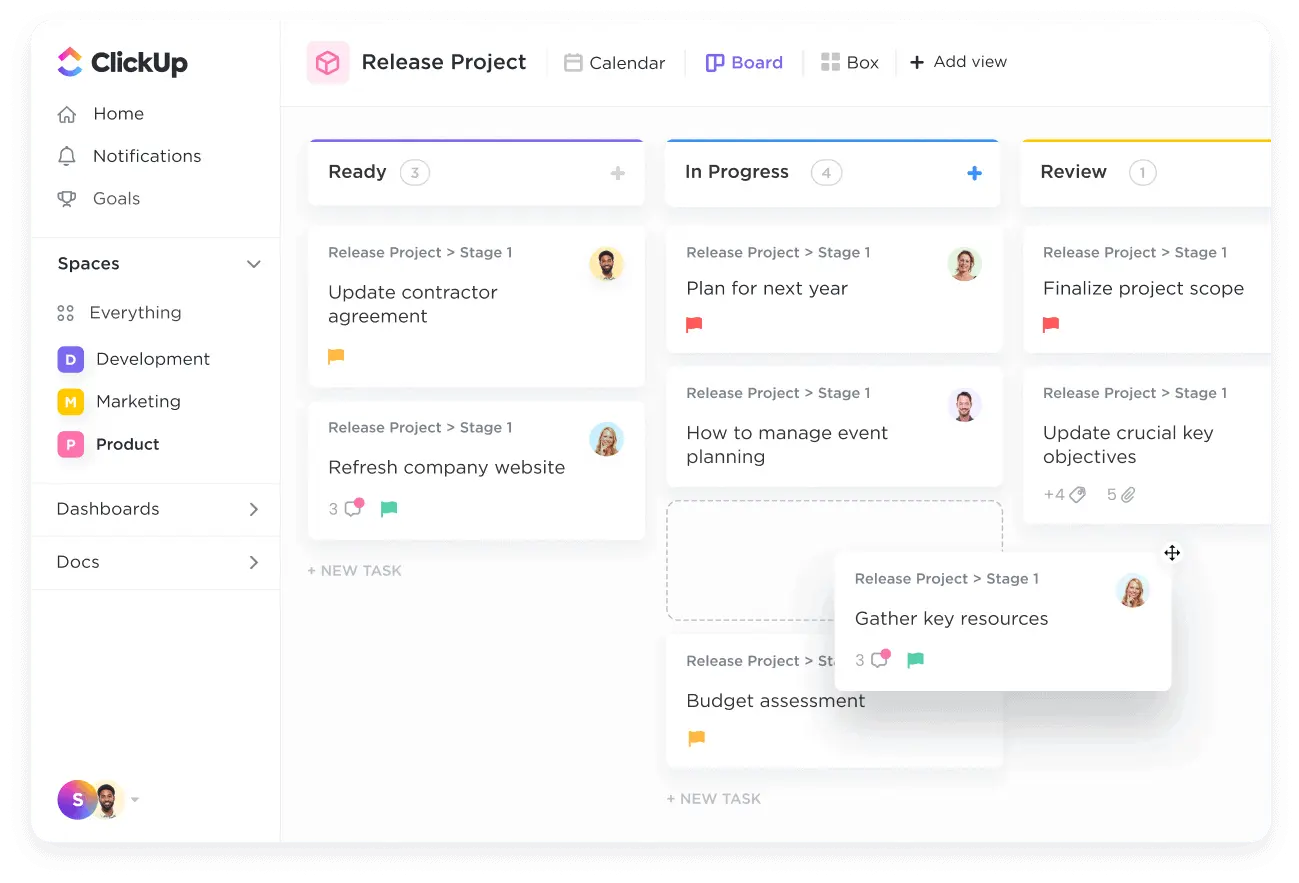
Pros:
- Integrates project management with content creation.
- Offers tools for task assignments, scheduling, and progress tracking.
- Enables collaboration among team members.
Cons:
- May be more complex than dedicated newsletter platforms.
- Not primarily designed for newsletter distribution.
Pricing:
- Offers a free tier with basic features.
- Paid plans provide additional features and support, with pricing varying based on the scale of use and additional requirements.
#7 Buttondown
Buttondown is an email newsletter service that caters to writers and creators who prioritize simplicity and minimalism in their tools.
Pros:
- User-friendly interface that simplifies the newsletter setup process.
- Supports Markdown for easy formatting.
- Provides analytics to track reader engagement.
Cons:
- Limited customization options compared to more robust platforms.
- Fewer integrations with third-party services.
Pricing: Buttondown offers a free tier that allows up to 1,000 subscribers, beyond which paid plans start, scaling with the number of subscribers.
#8 ConvertKit
ConvertKit is designed specifically for online creators such as bloggers and podcasters, focusing on powerful email marketing tools and subscriber management.

Pros:
- Offers advanced automation features and segmentation capabilities.
- User-friendly interface tailored for content creators.
- Strong support for direct sales through integrated commerce solutions.
Cons:
- More expensive than some alternatives, especially for beginners.
- Limited in terms of template designs for emails.
Pricing:
- Free tier available for up to 1,000 subscribers.
- Paid plans start at approximately $29 per month, with pricing increasing based on the number of subscribers.
Substack Alternatives - FAQs
What are the key features to look for in a Substack alternative?
Look for ease of use, monetization options, integration capabilities, and support for multimedia content.
Can I migrate my existing subscribers to a new platform?
Most platforms offer tools or support to help you migrate your subscribers smoothly.
How do Substack alternatives handle monetization differently?
Alternatives may offer lower fees, different revenue models such as memberships or donations, and enhanced analytics.
What are the benefits of using a platform with integrated AI?
Quail's AI can help optimize content delivery, analyze reader engagement, and automate responses to increase interaction.
Are there free-to-use options among these alternatives?
Some platforms, like Quail, offer free initial use and only charge fees after you start earning, which can be beneficial for new creators.
What is Substack and Who are Substack's Competitors?
Substack is a platform that allows writers to publish newsletters and earn money through subscriptions. It provides a straightforward way for creators to share content directly with their audience and monetize their work.
Substack's competitors include a range of platforms such as Ghost, Patreon, Memberful, and Quail, each offering unique features like AI integration, different monetization models, and specialized tools for audience engagement.
These alternatives cater to diverse needs of creators looking for specific functionalities, pricing models, or broader communication options with their subscribers.






